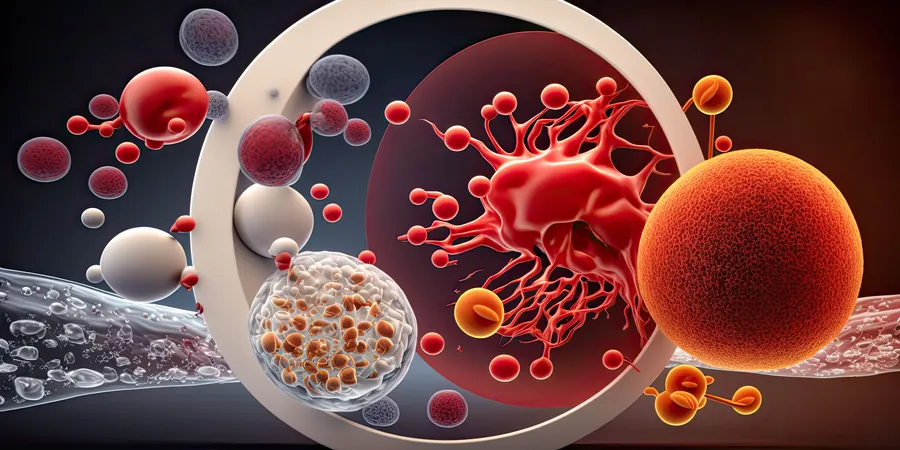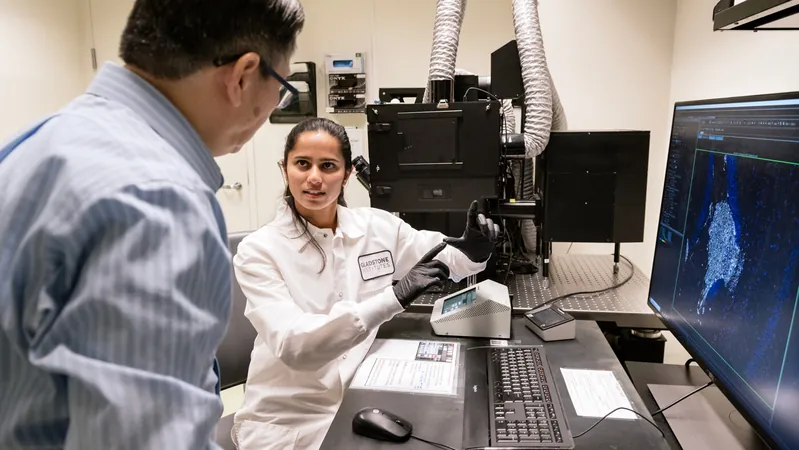
Groundbreaking Discovery: Three Proteins Could Revolutionize AML Treatment!
2024-11-02
Author: Rajesh
Groundbreaking Discovery: Three Proteins Could Revolutionize AML Treatment!
A recent study published in *3 Biotech* unveils that three specific proteins—THRAP3, STMN1, and GNA13—may serve as pivotal therapeutic targets in battling aggressive blood cancers, including acute myeloid leukemia (AML), diffuse large B-cell lymphoma (DLBCL), and Burkitt’s lymphoma (BL). The research highlights alarming overexpression of these proteins in cancer cells, contrasted by their negligible presence in healthy blood cells, indicating their potential role in cancer progression.
Utilizing advanced techniques such as Western blotting, the researchers discovered significantly increased mRNA levels of THRAP3, STMN1, and GNA13 across various malignancies compared to matched normal tissues, with statistical significance (P ≤ .01). Kaplan–Meier curve analyses suggest that heightened expression of these proteins correlates with a grim prognosis and reduced overall survival rates (P ≤ .02) for patients afflicted with blood cancers.
The possibility that these proteins, particularly THRAP3, are intricately involved in tumorigenesis opens exciting avenues for future research. Functional studies indicate THRAP3’s association with crucial pathways responsible for cancer cell proliferation and survival, as well as resistance to chemotherapy (corrected P ≤ .05). This could signify a paradigm shift in the approach to treating AML, DLBCL, and BL, which are known for their aggressive nature.
In its broader implications, targeting STMN1 has already shown promising results in inhibiting the proliferation and metastasis of other cancers, particularly pancreatic cancer, highlighting the need for more tailored therapies unique to each malignancy.
Past Findings and Connections
The authors also reference earlier work linking THRAP3, STMN1, and GNA13 to chronic lymphocytic leukemia (CLL), marking a continuity of discovery across various blood cancers. Other studies have pointed to the involvement of these proteins in multiple myeloma and other malignancies such as gastric and lung cancers, further reinforcing the ubiquity of their overexpression as a marker for poor prognosis.
Insights into Proteins and Pathways
Further analysis of THRAP3 revealed its strong association with critical cancer pathways, such as the spliceome, hippo, and mTOR signaling pathways, which are known to facilitate tumorigenesis and resistance mechanisms in cancer cells. Key interactors like SNRPB1 and CDCL5 are critical in RNA-related processes, potentially making them viable targets for new therapies.
Interestingly, THRAP3 appears to collaborate with a network of 43 proteins involved in RNA processing and splicing, including some previously recognized for their roles in chemotherapy resistance. Understanding these interactions may lead to innovative strategies to enhance treatment responses in patients suffering from aggressive cancers like AML.
Conclusion
As the urgency for novel therapeutic strategies grows for cancers like AML, DLBCL, and BL, the emerging focus on THRAP3, STMN1, and GNA13 presents a potentially transformative path forward. Researchers aim to explore these proteins further, seeking to confirm their roles in cancer biology and develop targeted treatments that could significantly improve patient outcomes. Stay tuned for more updates on this exciting area of cancer research!



 Brasil (PT)
Brasil (PT)
 Canada (EN)
Canada (EN)
 Chile (ES)
Chile (ES)
 España (ES)
España (ES)
 France (FR)
France (FR)
 Hong Kong (EN)
Hong Kong (EN)
 Italia (IT)
Italia (IT)
 日本 (JA)
日本 (JA)
 Magyarország (HU)
Magyarország (HU)
 Norge (NO)
Norge (NO)
 Polska (PL)
Polska (PL)
 Schweiz (DE)
Schweiz (DE)
 Singapore (EN)
Singapore (EN)
 Sverige (SV)
Sverige (SV)
 Suomi (FI)
Suomi (FI)
 Türkiye (TR)
Türkiye (TR)